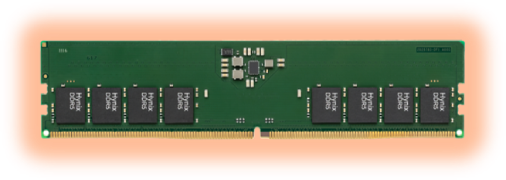The Road Ahead: DRAM Fueling Automotive Trends
The automotive industry is undergoing a massive transformation, driven by technological advancements and changing consumer expectations. Among the most significant trends shaping this evolution are advanced driver-assistance systems (ADAS), electrification, and rich infotainment systems. In our last blog post, we highlighted the role of FLASH memory in the automotive industry. Now, we dive deeper into how DRAM is chipping in to advance these industry trends.
The global automotive memory market is set to expand significantly, with analysts projecting it to grow to USD 37.45 billion by 2031. According to Yole Group, DRAM and NAND flash are expected to dominate the automotive memory market, accounting for a combined 80% share. DRAM alone is projected to capture 41%, underscoring its critical role in automotive applications.
The Surge in Memory Demand
The proliferation of new automotive technologies—radar, LiDAR, high-resolution imaging, and object recognition—requires high-density memory for applications inside the vehicle cabin, as well as for the external monitoring of the vehicle’s environment. These technologies are foundational for advanced driver-assistance systems (ADAS) and autonomous driving, where real-time data processing and rapid decision-making are crucial. The immense amount of computational power that is required demands reliable memory. Self-driving cars, for instance, are expected to run on about one billion lines of code according to Jaguar Land Rover, a stark contrast to the 145,000 lines used in NASA's Apollo 11 mission to land the spacecraft on the moon. This surge in code complexity necessitates robust memory solutions to store and process vast amounts of data in real-time.
The bill of materials (BOM) for memory and storage components for Level 2 autonomous vehicles is expected to double by 2025 compared to 2023, surpassing $100 due to the increased gigabyte content in these vehicles. According to market projections, over 97 million cars will be sold in 2025, each equipped with an average of 16 gigabytes (GB) of DRAM and 204GB of NAND. Higher-end vehicles will probably reach 2 terabytes (TB) of DRAM + NAND. This is a substantial increase from 2021 when cars typically featured around 5.3GB of DRAM and 50GB of NAND.
Enriched Cabins
Another significant trend is the enhancement of infotainment systems, transforming vehicles into extensions of our digital lifestyles. Modern infotainment systems offer rich, interactive experiences that require substantial memory and storage. This shift towards a more connected and immersive in-car experience further drives the demand for advanced DRAM solutions.
DDR3 and LPDDR3 are commonly used in these systems, balancing performance with power efficiency.
Electric vehicles
While the electrification trend in itself does not directly impact memory and storage requirements, the associated technologies do. Electric vehicles (EVs) typically come with higher levels of ADAS/autonomy features and more sophisticated infotainment systems. These advancements drive the need for more memory and storage to support the enhanced computational demands. As EVs become more common, the role of DRAM in ensuring seamless operation and safety increases. Low-power DRAM, like LPDDR3, in particular, is favored for its low power consumption, making it ideal for battery-operated systems in EVs. As EVs often feature more advanced infotainment and ADAS capabilities, the need for efficient memory solutions is even more pronounced.
DRAM for automotive applications
While DDR5 is the new kid on the block taking on the memory challenges in the latest advanced state-of-the-art automotive technologies, the previous generations continue to deliver on quality, reliability, and cost-effectiveness. DDR4, with its high speeds and efficiency, is particularly suited for high-resolution image processing and real-time data analysis required by ADAS and autonomous driving. DDR4's bandwidth and power efficiency contribute to system performance and reliability. However, DDR2 and DDR3 still get specified for less complex applications due to their cost-effectiveness. For example, DDR3 is widely used in automotive systems for tasks that require moderate to high data processing capabilities. With its higher data transfer rates, compared to DDR2, DDR3 supports more complex ADAS functions, such as advanced image processing and sensor fusion. Automotive applications also demand memory solutions that withstand extreme temperatures, vibrations, and other harsh conditions. Automotive-grade DDR2, DDR3, and DDR4 DRAM are designed to meet these requirements, providing consistent performance and longevity. In previous blog posts, we elaborated further on automotive grade 0 through 3 and wide/automotive temperature range memory components.
As the automotive industry balances the integration of cutting-edge innovations with the reliable performance of established technologies, the different generations of DRAM technologies are fundamental to the current landscape of automotive safety and infotainment systems. By providing the necessary speed, capacity, and reliability, DDR2, DDR3, DDR4, and DDR5 DRAM support the data processing and decision-making required for older dashboard technologies as well as advanced driver-assistance and autonomous driving features.
Related: Speed and Storage: The Role of Flash Memory in the Automotive Industry
SMARTsemi is your supply chain partner for DRAM components, eMMC solutions, and SD/microSD Flash Memory Cards for long-life applications. With 20+ years of industry experience, we understand your challenges and have aligned our priorities with yours to simplify your memory chip supply chain for the long run. We know what you need before you need it. Get a jump start and request a sample today.







